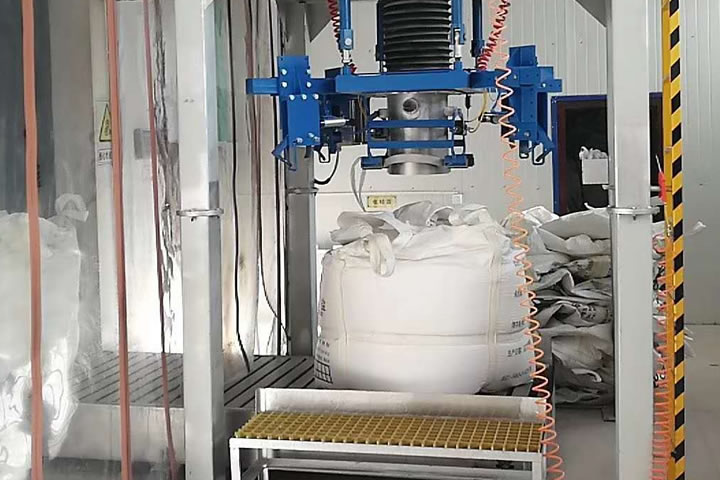In the late winter of last year, in the workshop of Harbin Chemical Plant at minus 20 degrees, Director Wang smiled bitterly at me with a mask full of dust particles: "Xiao Zhang, when can our ton bag packaging machine change its temper? Every time the workers are filled with polypropylene powder, they become snowmen." These words pierced into our hearts like a steel needle, and also made our team start a technical breakthrough for half a year.

Traditional ton bag packaging machines are like using bamboo baskets to draw water when dealing with fine powder materials - the filling port always sprays out "mushroom clouds". We tried to install bag dust removal, but they went on strike collectively when encountering materials with high static electricity. It was not until the cyclone separation technology in the aerospace field was moved into the workshop that the key to breaking the deadlock was found. Today's filling heads are like intelligent breathing systems. The negative pressure airflow generated when the material falls will suck the escaping dust into the circular recovery cabin. This "dust removal barrier" has reduced the PM2.5 value in the workshop of a carbon powder factory in Xinjiang by 70%.
Speaking of innovative highlights, we have to mention our "three-proof" ton bag clamp. The biggest headache for Northeast customers is that the ton bags are hard to put on in winter. The constant temperature clamp arm we designed can automatically align while heating the bag mouth. Last month at the Inner Mongolia Fertilizer Plant, watching the workers complete the bagging operation with one hand in an environment of minus 15 degrees, the factory manager joked: "This clamp knows how to defrost better than my microwave oven."
Intelligent upgrades have given new life to old equipment. After installing a visual recognition system on the old ton bag line renovated for a plastic particle enterprise in Jiangsu and Zhejiang, it can now automatically detect the tilt of the bag body and correct it in real time. The most amazing thing is the "learning ability" of the weighing module. When encountering materials with poor fluidity, it will automatically adjust the vibration frequency, just like a master's spoon. Customer feedback said that now each shift can pack 30 tons more goods, and the loss rate has dropped to the lowest level in history.
The breakthrough in dust control technology brings unexpected gains. The quality inspection director of a titanium dioxide factory in the southwest found that since the replacement of our ton bag packaging machine, the abnormal fluctuation of product moisture content has disappeared. The secret is hidden in the new dehumidification recovery device-this system will continuously monitor the humidity while filling, and the captured dust will be dried and re-injected into the main material flow, which is both environmentally friendly and cost-effective.
The new model recently debugged is even more interesting. The moisture-proof ton bag packaging machine developed for the needs of Southeast Asian customers integrates nitrogen replacement function in the filling cabin. Watching the video sent by the Thai customer, the sugar lay flat in the ton bag and there was no more moisture and agglomeration. The guys in the R&D department were so excited that they almost spilled coffee on the control screen.
Standing in the test workshop, looking at the newly launched ton bag packaging machine, I suddenly remembered the dusty scene three years ago. When the current equipment is filling, even the operating table can maintain the cleanliness of a coffee cup. When Director Wang came to inspect the goods last week, he took off his mask and stood next to the equipment for ten minutes. Before leaving, he patted my shoulder and said, "This time, the workers can finally show their true colors and work." Perhaps this is the meaning of our persistence - to let the cold and hard steel machinery also protect the workers' breathing. In every roaring ton bag packaging machine, our persistent pursuit of "clean production" is beating.

